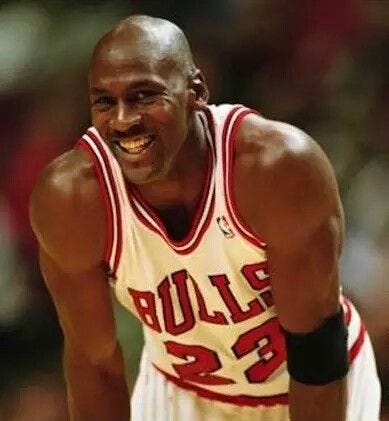
Share
So a lot of folks often think i’m a bit crazy when I talk about how teeth have such massive impacts on the body, the brain, neurology, etc.
They think to themselves… “What? This sounds crazy! It’s just teeth!”
And in future articles I will give you lots of evidence and patterns that you, yourself, can pay attention to in order to prove this correlation yourself.
Plus you have tons of examples in history where others have noted this correlation.
For example it is well documented that when purchasing slaves hundreds of years ago, one of the main things that were used to judge the health and strength was teeth.
This is because they noticed a very strong correlation.
This is the same correlation you will notice with professional athletes and supermodels today. To have a perfect body you will pretty much always have naturally straight teeth (no orthodontics) with wide arches.
But anyway.. i will expound on that another time. For now let me explain my view on the ‘why’.
Think of the skull like a balloon
A balloon is a metaphor that a friend, Marcello, used to use back 7-8 years ago. And so I’d like to give him credit for this metaphor.
Specifically I mean that you should think of the soft tissue that covers the skull, ie. the fascia and skin, as a balloon that covers the bones of the skull. In fact this soft tissue is a single sheet that covers the entire body, but i’m simplifying things here a bit.
And note that the skull is not a single piece as many folks mistakently believe. Rather there are about 27 bones of the skull that are connect at soft tissue ‘sutures’.
The bones of the skull actually move and ‘breathe’ in a way… which some folks refer to as the craniosacral ‘rhythm’.
If you’ve ever been to an osteopath or a craniosacral therapist they will have taught you this as their profession has this at its foundation.
Another great way to see that the skull is not a single piece is to watch a boxer get hit in the face in slow motion.
The fact that all of the bones are separate pieces allows it to absorb the impact much better than if it were a solid piece. And if it were a single piece it would shatter far easier.
Note how the face changes shape as the man got hit. It would not be able to do that if it was a single piece.
Deflating the skull
With age the soft tissue of the skull collapses inwards crushing the bones, which in turn crush the brain.
Just picture a real balloon, which you have somehow managed to put a structure of legos into. Then deflate the balloon and note what happens to the lego structure. It gets crushed and changes shape to adjust for the reduced amount of space it has.
The same thing happens with your skull. The legos can be thought of as the bones, which get deranged the more the soft tissue collapses in on it.
This is why people’s faces ALWAYS get less symmetric with age.
Have you ever found a person’s complexion improve with age? It never happens.
And there is this important thing called the brain, which is being housed by the bones which are now getting crushed. And so what do you think happens?
Well.. of course your cognitive function and neurological function get negatively impacted.
And this is exactly what you see with humans as we age. Neurological disease, loss of cognitive abilities, etc.
So why does the soft tissue of the skull collapse inwards with aging?
So my view/theory here is that it’s almost purely physics. The soft tissue needs to cover the skull and the jaw. The jaw is the only fully removable piece of the skull and what is the only thing separating the jaw from the rest of the skull?
Answer: the teeth
And the upper and lower teeth will always close till they make contact (ie. chewing).
So if you were to grind this person’s upper and lower teeth by say 1-2mm each, what would happen?
Well, there would be a lot less dental height between their jaw and their skull. Makes sense, right?
Then if this height were missing, this means that the ‘balloon’ covering the skull would essentially contract as there is less area to cover. This is what I call the ‘deflating of the skull’.
Now the question is… how does aging result in this loss of dental height?
Simple… you grind your teeth down. And you grind your teeth down much faster if you either did orthodontics or if they never developed correctly to begin with (eg. narrow arches).
Inflating the skull
Ever notice that some of the people with the best physiques have skulls that almost look as if they are very ‘inflated’?
If you followed what I wrote above, you noted that I’m basically just referring to things that have physics at their core. A loss of dental height results in a collapse of soft tissue that surrounds the skull, thus crushing the bones underneath.
And the great thing about physics is that any forces that you apply can also be reversed by putting the opposite force.
Meaning if you were to artificially add dental height than you would increase the amount of space the soft tissue of the skull needs to cover, thus putting a stretch on it.
I like to refer to this as the ‘door stop effect.’ Because its similar to the physics of a door stop. By adding height between the teeth artificially, you are no longer allowing the jaw to fully close.
This stretches the soft tissue of the entire skull (and body since its a single sheet), thus allowing the cranial bones to slowly move to their correct anatomical position.
And also relieving pressure off the brain (ie. uncrushing it).
I have inflated and deflated my skull numerous times over a ~10 year period.. so while it may sound like i am talking ‘theory’ I am in fact talking about something that I, myself, have experience numerous times.
And i’ve seen the:
-
negative impact on my body and cognitive/neurological functions when i ‘deflated’ the balloon
-
positive impact on these things when i ‘inflated’ it. For example not only did my body improve (without exercise) but I was able to think clearer/deeper, work longer, and be happy pretty much 24-7 effortlessly.
Wrapping up
So in this article I talk about how I like to describe the skull as a balloon that can deflate (with age), but also inflate (by adding dental height artificially).
I also talked about why it directly correlates to things like cognitive and neurological function. But don’t take my word for it!
Have a look at the work of folks like Brendan Stack? He and dentists like him have been using dental splints to cure neurological diseases like Parkinson’s for 20+ years.
In 2017-18 I actually had Dr. Stack’s partner dentist, Dr. Jeff Brown, as my dentist. And so I was pretty well researched on the use of splints in addressing neurological conditions.
Stay tuned! If this started to sound even a bit convincing… you still have a hurricane coming in future articles :)








